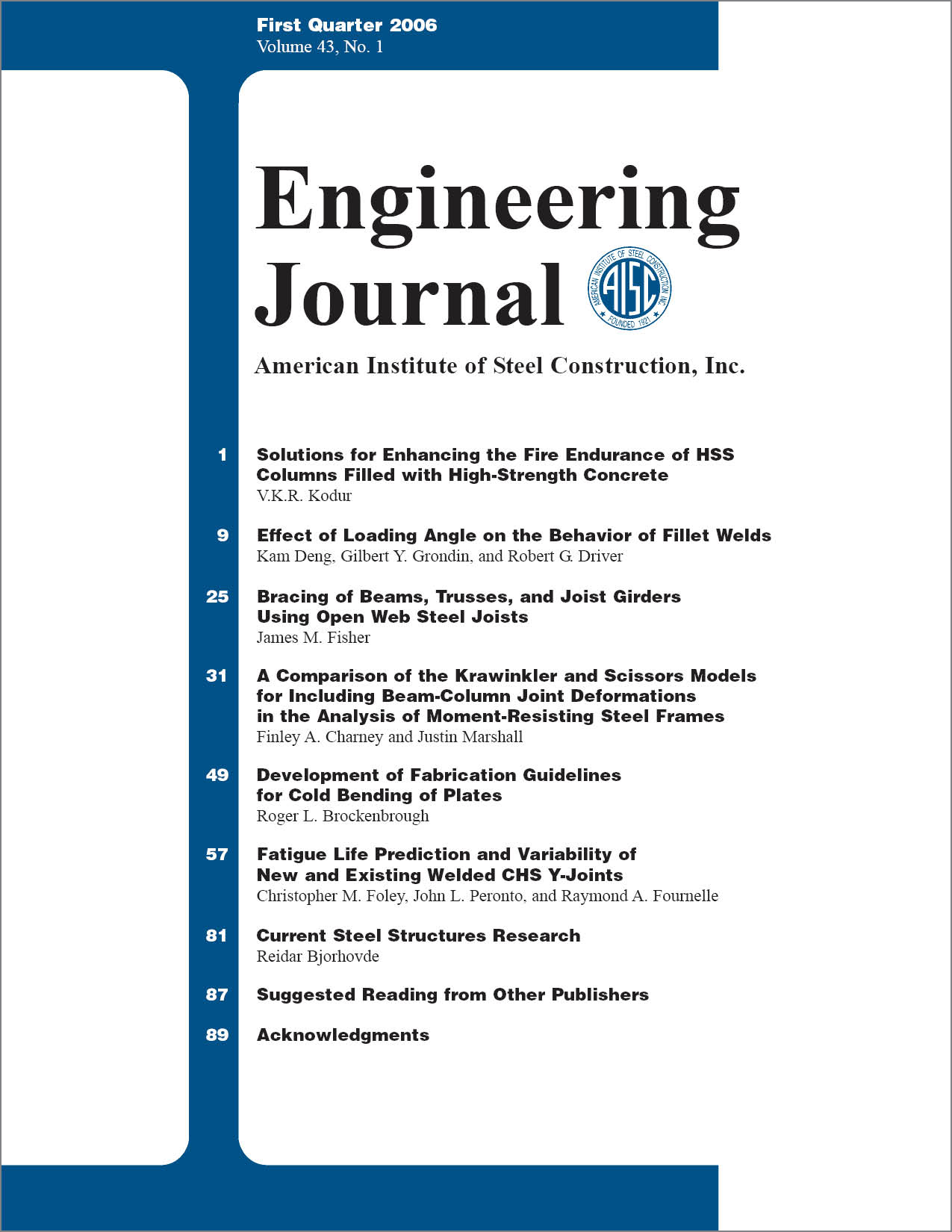Effect of Loading Angle on the Behavior of Fillet Welds
DOI:
https://doi.org/10.62913/engj.v43i1.870Keywords:
Connections and Joints, WeldsAbstract
The fillet weld design equation in the American and Canadian steel design standards is based upon research on the behavior of SMAW test specimens, therefore, the significant increase in weld strength recognized by these design standards as the loading angle increases might not be suitable for low toughness welds made with other welding processes such as FCAW, which is more commonly used for production welding. An experimental program was conducted to investigate the effect of filler metal toughness on fillet weld behavior. The first phase of this test program included only transverse fillet welds. The variables in the first phase included filler metal classification (both filler metals with a toughness requirement and some without were tested), electrode manufacturer, fabricator, weld size, root notch orientation, and test temperature. A reliability analysis of the test results (102 test specimens) indicated that the current design equation provides a safety index greater than 4.5 for transverse welds. The second phase, which formed the basis of the work presented in this paper, examined the effect of filler metal classification and toughness on the strength and ductility of fillet welds loaded at different angles with respect to their longitudinal axes. The results of this phase were obtained from 30 lap spliced specimens with nominally 12.7 mm (0.50 in.) fillet welds. Twenty-seven test specimens were prepared using the FCAW process. The specimens were loaded in three different directions with respect to the weld axis: 0°, 45° and 90°.

